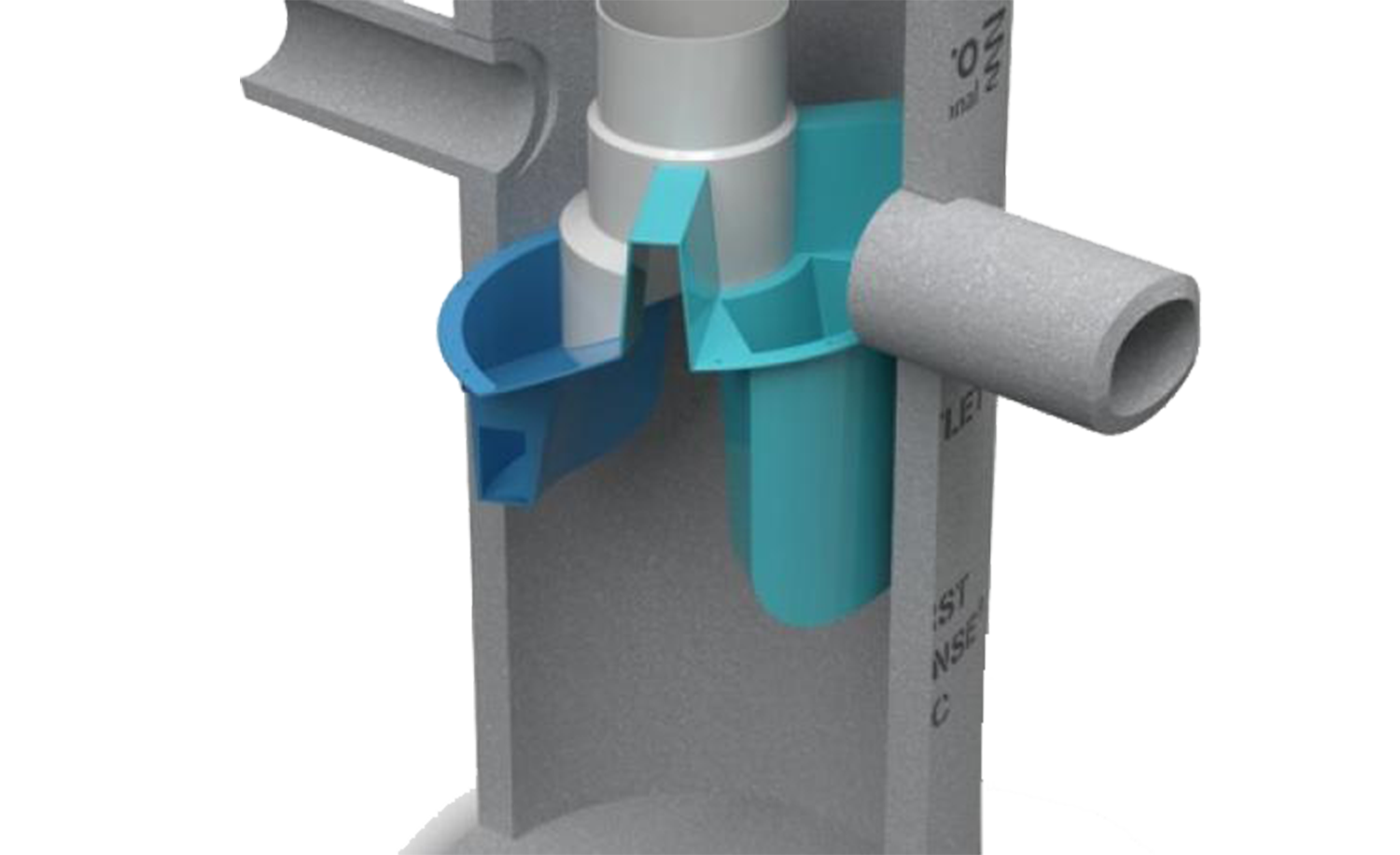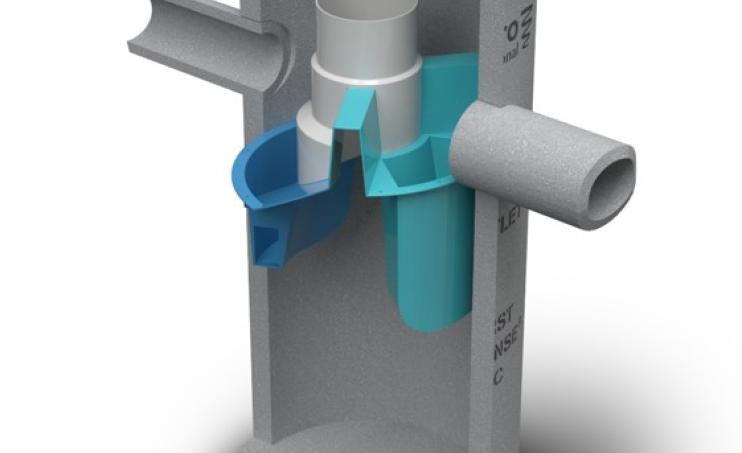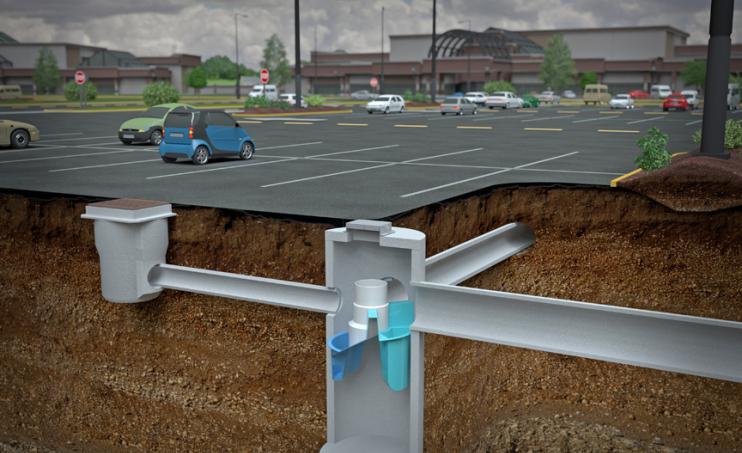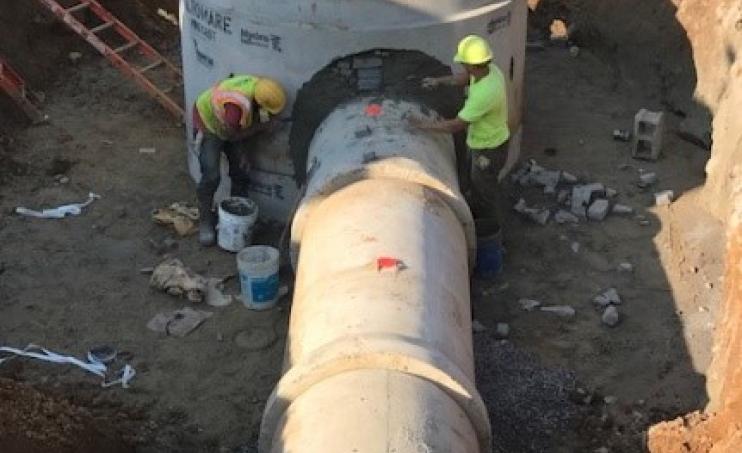First Defense®
Capture and retain stormwater sediment, trash and floatables in a unit that saves site space and adapts to smaller or logistically difficult site locations.
Schedule a lunch and learn with one of our stormwater experts. Broaden your technology knowledge base and earn 1.0 PDH.

Overview
First Defense® is a versatile stormwater separator with high approved flow rates, enabling engineers and contractors to save site space and projects costs by using the smallest possible footprint. It works with single and multiple inlet pipes and inlet grates, and is easily maintained from the surface by standard vacuum tanker. Designed with site flexibility in mind, the First Defense stormwater separator provides versatile capture of sediments, trash and floatables that allows engineers to maximize available site space without compromising stormwater treatment level. First Defense is available in different configurations to comply with stormwater regulations defined by various jurisdictions. Want to learn more? Request a Lunch & Learn.
Features
Applications
The First Defense reliably treats runoff from impermeable surfaces across a broad range of catchments.
First Defense also operates successfully as part of a management train alongside other proprietary or natural drainage features, for example as treatment before infiltration.
- As part of LID or LEED projects
- Stormwater treatment at the point of entry into the drainage line
- Sites constrained by space, topography or drainage profiles with limited slope and depth of cover
- Retrofit installations where stormwater treatment is placed on or tied into an existing storm drain system
- Pretreatment for filters, infiltration and storage
Benefits
Cut footprint size, cut costs
First Defense provides space-saving, easy-to-install surface water treatment in standard sized chambers/manholes.
Adapt to site limitations
Variable configurations will help you effectively slip First Defense into a tight spot. It also works well with large pipes, multiple inlet pipes and inlet grates.
Prevent washout
First Defense retains the pollutants it captures. The low-energy vortex separation of First Defense eliminates excessive agitation of captured pollutants ensuring that these pollutants are not washed out during subsequent rainfall events.
Save installation time
Every First Defense unit is delivered to site pre-assembled and ready for installation, so installation is as easy as fitting any chamber/manhole.
Targeted Pollutants
- Coarse particles
- Fine particles
- Trash
- Floatables
Approvals, Verifications and Certifications
- New Jersey Corporation for Advanced Technology (NJCAT) – First Defense Optimum
- New Jersey Department of Environmental Protection (NJDEP) – First Defense Optimum
- New Jersey Corporation for Advanced Technology (NJCAT) – First Defense High Capacity
- New Jersey Department of Environmental Protection (NJDEP) – First Defense High Capacity
- ISO 14034 verification for Canadian OGS
- City of Indianapolis – First Defense High Capacity
- City of Indianapolis – First Defense Optimum
- Virginia Department of Ecology BMP Clearinghouse
- Ohio Department of Transportation
- Virginia Department of Transportation
- California Water Boards Full Trash Capture
How it Works
- Contaminated stormwater runoff enters the inlet chute from a surface grate and/or inlet pipe. The inlet chute introduces flow into the chamber tangentially to create a low energy vortex flow regime that directs sediment into the sump while oils, floating litter and debris rise to the surface.
- Treated stormwater exits through a submerged outlet chute located opposite to the direction of the rotating flow. Enhanced vortex separation is provided by forcing the rotating flow within the vessel to follow the longest path possible rather than directly from inlet to outlet.
- Higher flows bypass the treatment chamber to prevent turbulence and washout of captured pollutants. An integral bypass chute conveys infrequent peak flows directly to the outlet chute, eliminating the expense of external bypass control structures.
- Floatables are diverted away from the bypass chute into the treatment chamber through the floatables draw off port.



